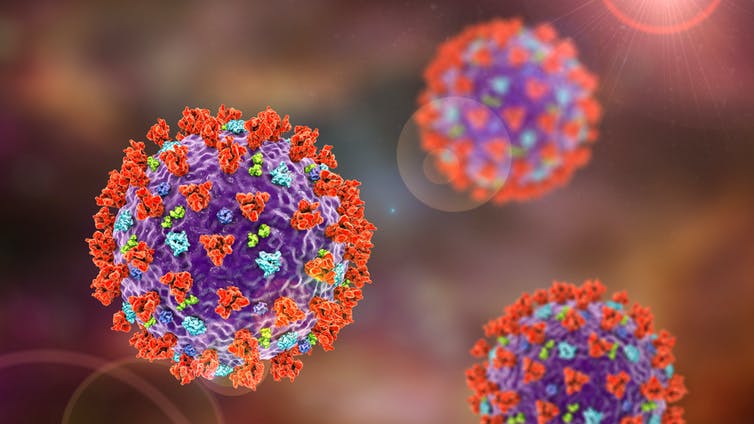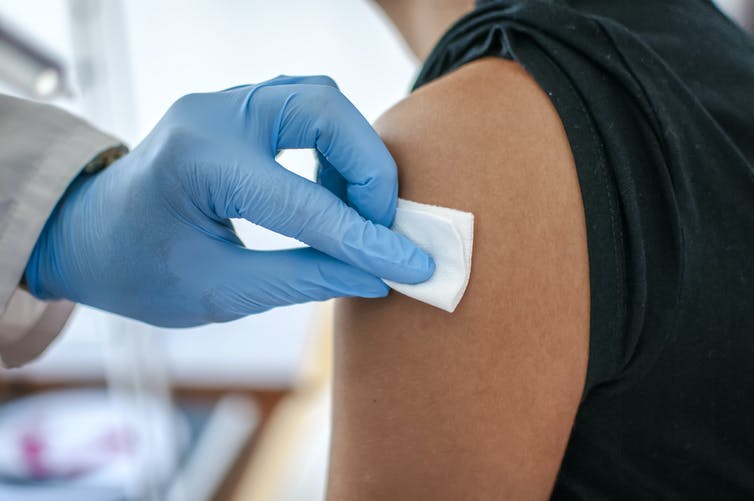The University of Queensland and CSL have a protein subunit vaccine, which also uses the spike protein as a target. Unfortunately, spike protein is notorious for changing its shape, which makes it harder for our immune system to recognise.
So the University of Queensland has developed a molecular clamp to hold the spike protein in the correct shape. The clamped spike is then mixed with an adjuvant, a compound that stimulates an immune response. The adjuvant here is MF59, used in some influenza vaccines for older people.
AstraZeneca has started vaccinating volunteers as part of phase 3 clinical trials in the United States, while CSL and the University of Queensland are vaccinating volunteers for their phase 1 clinical trial in Australia.
Two promising candidates
Until a vaccine is shown to work in a phase 3 clinical trial, it’s educated guesswork as to which will be effective.
Selecting two very different types of vaccines is a good strategy though. Each has different pros and cons, and we’ll have a better chance of ending up with an effective vaccine, than, say, if we were banking on two similar candidates.
The Oxford/AstraZeneca vaccine can be made quickly and should generate immunity after a single shot. Only one viral vector vaccine has been approved before, for Ebola, so it’s more experimental. But it’s already well advanced through clinical trials.
The Queensland/CSL vaccine takes longer to make as manufacturing large amounts of protein can be difficult, and it will require two shots. But protein subunit vaccines are more of a known entity, routinely used to prevent influenza and hepatitis B.
Why so many doses?
Some 84.8 million doses may seem like a lot to vaccinate 25 million Australians. But it’s reasonable for two reasons.
First, each person might need two doses of vaccine to generate optimal immunity. For the Queensland/CSL vaccine, the pledged 51 million doses will allow for that and more.
A total of 33.8 million doses of the Oxford/AstraZeneca vaccine would allow for each person to get one, as intended for this type of vaccine, with plenty to spare. But we should note early clinical trial data has suggested two doses are better than one.








